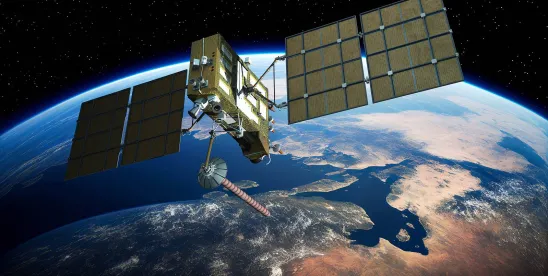Demonstrating Japan’s intention to fortify its space policy and support the growth of space businesses, the government approved the Basic Policy on Economic and Fiscal Management and Reform 2025 (Basic Policy 2025) on June 13, 2025. This important policy document outlines the government’s priority issues and sets the direction for the following fiscal year’s budget.
This GT Advisory provides an overview of the Basic Policy 2025 and its impact on the Japanese space industry.
I. Basic Policy 2025
The Basic Policy 2025 establishes the government’s stance on strengthening space policy, advancing space research and development through public-private collaboration, and supporting the growth of space businesses, with particular emphasis on the growth of startups in the space industry.
| Item | Description |
| Strengthening space policy | Based on the Basic Plan on Space Policy and the Space Technology Strategy (revised in 2024), the Strategic Headquarters for Space Development at the Cabinet Office will strengthen Japan’s space policy. |
| Constructing satellite constellations, developing and demonstrating next-generation technologies, and promoting active procurement of satellite data from startups | Aiming to add value to observation and satellite communications that contribute to disaster prevention and mitigation, national resilience, and security, the government, through public-private collaboration, will advance the construction of satellite constellations, the development and demonstration of next-generation technologies, and the active procurement of satellite data from Japanese startups. |
| Supporting rocket development and increasing launch frequency | The government will support rocket development in the public and private sectors and increase launch frequency. |
| Advancing development of a pressurized rover | Under the Artemis program, the government will advance development of a pressurized rover, aiming to land a Japanese astronaut on the moon. |
| Enhancing low-Earth orbit activities, research and development for deep space exploration, and expanding configuration of the Quasi-Zenith Satellite System | The government will enhance low-Earth orbit activities, research and development for exploration beyond the moon and Mars, construction of the seven-satellite configuration of the Quasi-Zenith Satellite System, and the development of an 11-satellite configuration. |
| Startup support (Space Strategy Fund and government procurement) | The government will aim to promptly provide approximately JPY 1 trillion in support of the Space Strategy Fund and promote medium- to long-term government procurement to facilitate the business expansion of startups. |
| Amendment of Space Activities Act | The government aims to amend the Space Activities Act during the next ordinary session of the Diet, which would enable private companies to undertake new forms of space transportation. |
| Space utilization system | The government will establish a system to enable smooth review processes in response to the expansion of space utilization and to enable the sustainable operation of the Quasi-Zenith Satellite, as well as strengthening JAXA’s technical foundation and human resources. |
II. Basic Policy 2025 Policy File
In addition, the Basic Policy 2025 policy file states, “The government will make space a growth industry.” It also lists the below efforts and future goals.
According to the National Space Policy Secretariat of the Cabinet Office, the total number of rocket launches worldwide has increased significantly, from 97 in 2019 to 253 in 2024. On the other hand, Japan only had two rocket launches in Japan in 2019, and five in 2024. Rocket launches are the foundation of space activities, as they provide a means of access to space, and in order to strengthen Japan’s international competitiveness in the space industry, the government aims to launch 30 rockets per year starting in the early 2030s.
Further, as noted above, the government aims to make space a growth industry and expand the market size of Japan’s space industry by JPY 8 trillion in the early 2030s (double the market size in 2020).
| Efforts | Future Goals |
|
↓
Expanding the market size of Japan’s space industry
2020: JPY 4 trillion → Early 2030s: JPY 8 trillion |
Conclusion
In the United States, the “Mission to Modernize Astronautic Resources for Space (MARS) Act,” submitted May 13, 2025, would allocate USD 1 billion until Sept. 30, 2034, to renovate and modernize NASA’s Johnson Space Center. The Johnson Space Center is a facility for training, research, and flight control for manned space flight, and if the bill passes, it is expected to support manned exploration of the moon and Mars.
In the European Union, some member states have enacted their own space laws and established their own rules, which is impacting the growth of a single market for the space industry in Europe and international competitiveness. The “EU Space Act,” submitted June 25, 2025, would set unified rules within the European Union and aim to establish a single market for space business to strengthen international competitiveness (the Act is intended to apply to both EU operators and non-EU operators offering services in the European Union). See July 2025 GT Alert.
To remain competitive with these international efforts, the Japanese government aims to increase the market size of the space industry to JPY 8 trillion in the early 2030s (double the market size in 2020) and has included various space policies in the Basic Policy 2025. In particular, the Basic Policy 2025 states the government’s intention to submit the bill to amend the Space Activities Act to the ordinary session of the Diet in 2026 to respond to the diversification of forms of space transportation and artificial satellites. These moves are designed to boost the development of Japan’s space business and strengthen its international competitiveness.




 />i
/>i
